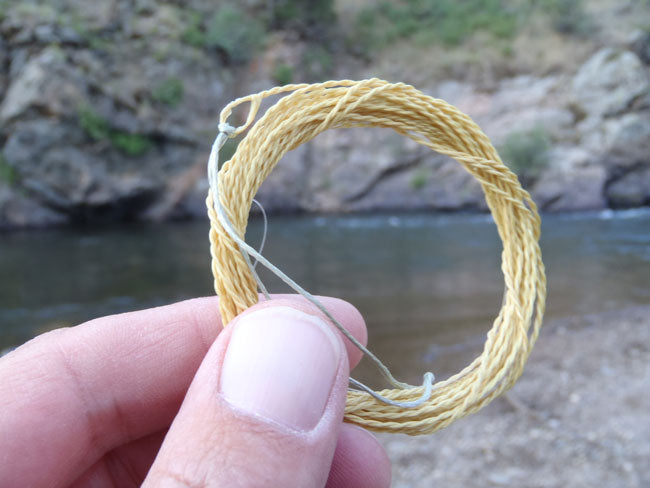I normally fish tenkara level lines, but today, something possessed me to dig up my traditional tenkara line and give it a workout. "Traditional" may not be 100% accurate as tenkara lines were made from horse tail, not today's modern materials. But the furled style is traditional. What Tenkara USA calls a "traditional tenkara line" is also known in Japan as "tenkara tapered line".
When I first started fishing tenkara I fished tenkara furled lines exclusively but eventually gave up on them because they turned into a snarled mess when you pulled a snag out. That's because they were made of monofilament (which stretches). That problem has been address by Tenkara USA and the new Tenkara USA lines are made of Kevlar which has no stretch, and a different taper, so that annoying problem is a thing of the past.
Many anglers like the way the traditional tenkara line cast better than level lines as they almost cast themselves it seems. Level lines have their advantages, but so do traditional lines. And today, I rediscovered some of the nice things about them.
- Unlike the level lines, traditional lines have no memory. You don't have to stretch them out to straighten them like you do with level lines. You just peel it off the spool and go.
- Traditional tenkara lines are tapered which many people feel makes a smoother cast. I suppose this depends on casting style and ability but they do certainly cast smoothly.
- Visibility is never an issue. Even the brightest colored level lines can be difficult to see in some lighting conditions. This is partly due to the fact that they're so thin. But the traditional lines are thick and in a bright, opaque color like the Kevlar line above, are always highly visible (more like a western fly line).
- Since Kevlar has no stretch, strike detection and hook sets are easier. These lines transmit very subtle takes well. Tenkara rods have relatively soft tips to begin with so in certain situations, this can be a real advantage.
- No line twist. One minor gripe I have about the level line is how it twists when you wind it around your line spool when it's still attached to the rod tip. That doesn't happen with traditional lines.
- I've always loved the ease of the girth hitch connection on traditional lines. You just slide the lilian in the loop and pull. That's it. To remove, just pull the tag end. It doesn't get much simpler than that.
So am I becoming a furled line convert? Probably not. There are too many things I like about level lines (mostly, the ability to change length). Everyone has their preferences though and I think traditional lines definitely have their place. And if they fit your casting style, I think you'll be very pleased with the new Kevlar upgrade.
Which do you prefer: level lines or traditional lines and why?
